Crochet Tips for Beginners to Advance Your Skills
As an experienced crocheter, one of the things I’m asked the most is: “How did you go from a beginner crocheter to a more advanced one?” or, a more realistic quote, “How the heck did you figure all this stuff out!?” Well, friends, myself and every other experienced crocheter did it one step at a time. I know, that’s a really simple, easy way to put it that gives no direction. So, today I’ve gathered some crochet tips for beginners based on my experience of learning to crochet, and my experience helping other people learn to crochet.

If you don’t want to forget these tips, you can always Pin them to Pinterest!
Crochet is such a lovely skill to have. Not only do we attain the ability to make beautiful, handmade things for ourselves or for friends and family or create items to donate to causes we believe in, but we also hone life skills like patience, perseverance, comfortably getting out of our comfort zone and more. Crochet also has a ton of health benefits when you work your skills often – what’s not to like!?
It can feel a bit frustrating, though, to feel like you’re ready to become more advanced, but not know where to start in growing and honing this new skill.
Don’t worry, that’s what this whole article is about! It’s a long one, so grab yourself a drink and get comfortable! We’ll be going over what I personally did and what I recommend beginner crocheters do when they’re ready to “level up” their crochet skills.
Crochet Tips for Beginners to Advance Your Skills
In this article, we’ll be going over 12 crochet tips for beginners who are looking to enhance their skill level. Some of these sections run into each other – and that’s a good thing. When worked together, these tips should help any crocheter feel a bit more advanced.
By the way, you don’t have to do all of this by yourself! If you’d like support from other crocheters in a supportive, uplifting and safe space – I’d love to invite you to join my Facebook group. I hang out in there quite often and am happy to help. Plus, there are a ton of wonderful crocheters just waiting to meet you and cheer you on!
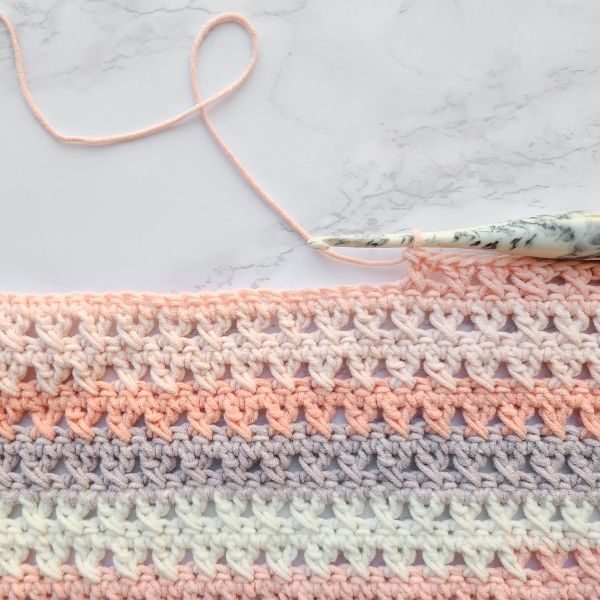
DISCLAIMER: This post includes affiliate links. This means, should you decide to purchase a product via one of these links, I will receive a small commission at no extra cost to you. I only recommend products I use and love (Or products I know others love, have heavily researched, know have good ratings and plan to purchase myself). These small commissions help to support this blog and continue keeping most of my patterns free. You can read more on my Privacy Policy, if you prefer.
Be Kind to Yourself – A silly, but very real crochet tip for beginners
First things first, before we get into any of these technical crochet tips for beginners, I think it’s necessary to remind everyone to be kind to themselves.
No one who has decided to learn a new skill has been “good” at it right away. In fact, when I learned, you probably could have heard me ranting about the learning process and chucking a badly crocheted rectangle out the window (it looked more like a Dorito chip, honestly).
I’ve helped a few beginners start from square one with learning to crochet, some of them very close friends of mine (who didn’t hold back on their thoughts or frustrations). The frustration for beginners can be so real, especially when you’re comparing yourself to someone who has crocheted for nearly 20 years. It’s easy to say, “Why don’t my stitches look even and uniform like yours?” and it’s easy to say, “Well, I didn’t get it immediately so I must never be able to get it, I’m just going to hide this yarn in a corner and never look at it again”.
If you don’t want to ever look at the yarn again, that’s totally fine – no one will shame you. However, if you want to learn to crochet and have a life long skill that has many practical uses as well as health benefits, you have to be willing to work through the frustration and ultimately be kind to yourself – even when you don’t get it right away.
You’re a beginner, after all! It’s your first time trying something. No one is good at something on their first go. You have to learn to crawl before you can walk and walk before you can run. All people who are great at something started at the beginning.
So be kind to yourself through the process and enjoy the fact that you have the ability to learn something new and that one day, all of your learned skills can help someone else learn something new, too.
Okay, now time to get technical and learn some crochet tips for beginners to go to “next level”!
Try New Stitches…
When you pick up a crochet hook and yarn for the first few times, you’ll be learning the basic, standard stitches that all crocheters use. These stitches are chain, single crochet, half double crochet and double crochet. These are definitely the standard stitches that you should know before moving on to learning stitch patterns, because these basic, standard stitches are used in them.
So, once you’ve learned these basic stitches and feel confident to move forward, it’s time to start practicing more stitch combinations. You’ll likely want to start with something easy and beginner friendly, like the Moss Stitch, and move your way through different stitch patterns and levels of difficulty until you reach stitch patterns like Catherine’s Wheel, for example, which would be a more advanced stitch.
In order to become a more advanced crocheter, you have to be prepared to push your level of crocheting knowledge by trying new stitch patterns. Learning new stitch patterns and new crochet techniques is what keeps you from getting bored, keeps you actively learning and helps you learn how and why things work the way they do.
Creating small swatches is totally fine. In fact, I would recommend trying new stitches on small swatches that are only a few inches wide so that you can really focus in and learn the stitch. Most stitch tutorials you’ll find on any crochet bloggers website or YouTube will likely start with a small swatch of 20 or so chains. I would recommend going with the teacher on this one, and try the stitch out on the same size swatch they did. Once you’ve tried it and understand how to work it, try upping the amount of stitches and recreate the swatch to master it.
Important Tip: When it comes to learning something new, don’t give up if one specific teacher doesn’t work for you. One of the best crochet tips (and life tips) I know of for beginners with anything is to recognize that sometimes a teacher just isn’t for you. It’s not your fault and it’s not the teachers fault. We all learn and teach differently. You may find that a stitch makes exactly zero sense when taught by one person, but is so clear and easy to understand with another. That’s not on you and it’s not on the teacher – You just have different learning/teaching styles and that’s okay.
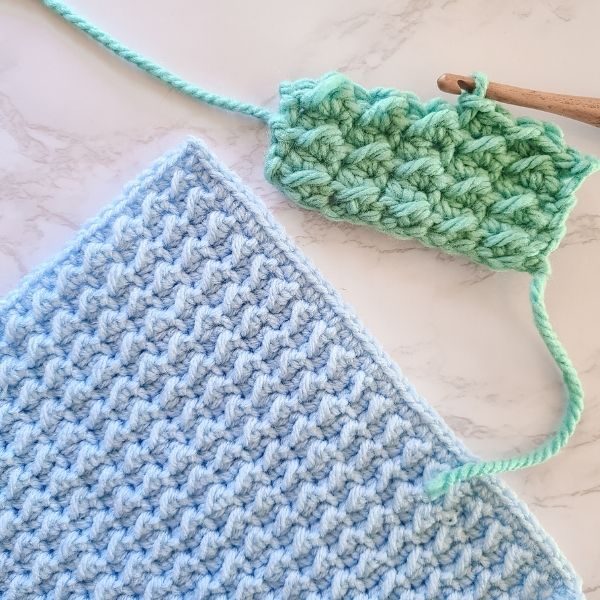
…And Pay Attention to the Look, Feel and How the Stitches Work
One of the things I think is so important when it comes to tips for crochet beginners is to pay attention to how and why something works. If you’ve followed any of my crochet tutorials, you’ve heard me say this often. Following directions is easy enough, but as you’re learning to crochet and if you want to take your skills to the next level, you’ll want to really focus on what the stitch patterns are actually doing, not just what they’re making.
If you’re at the very beginning of learning to crochet, you’ve likely been practicing putting one stitch in each stitch row upon row. Which is exactly what you should be doing but, once you feel you’re ready to move on beyond rows and rows of single crochet or double crochet, it’s time to start adding more stitches and techniques to your arsenal.
As you follow along with a YouTube tutorial or a picture tutorial and practice a new stitch, really think about how it feels, how it looks and what is happening while creating the stitch or working the technique.
For example, when you first learn to place two stitches into one stitch. Amazing! You can put two stitches in one stitch. But why would you want to? What is the result? What does it look like? How does it feel? When you ask yourself questions such as these, it can help you identify what is happening and why – which will help you remember not only how to work it, but how to use it in the future on your own creations to create the project you want. In this case, placing two stitches into one increases the amount of stitches and, when working in flat rows, will create an angle if worked continuously on each row. Pretty cool, right?
Another, more advanced example, is a shawl pattern. Shawl patterns such as my Lumina Shawl are worked back and forth in rows but have a triangle shape. How do they have the triangle shape? What creates it? Working back and forth in rows typically makes a square or a rectangle, right?
Well, it comes down to one small thing – a chain 2 space worked on each row in a specific place in the pattern which forces the work to have that triangle point. Without this chain 2 space, you would not have a triangle.
So, it’s easy to follow directions and have a nice outcome. However, if you want to up your skill level and start making things from your own ideas, you’ll need to know that that chain 2 space creates a triangle, or that placing two stitches in one increases the number of stitches and makes the project bigger.
One thing I did when I was really trying to focus on becoming a better crocheter (and ultimately, a designer), was focusing on what makes things work and keeping notes of what I’d learned – no matter how big or small the technique or information was.
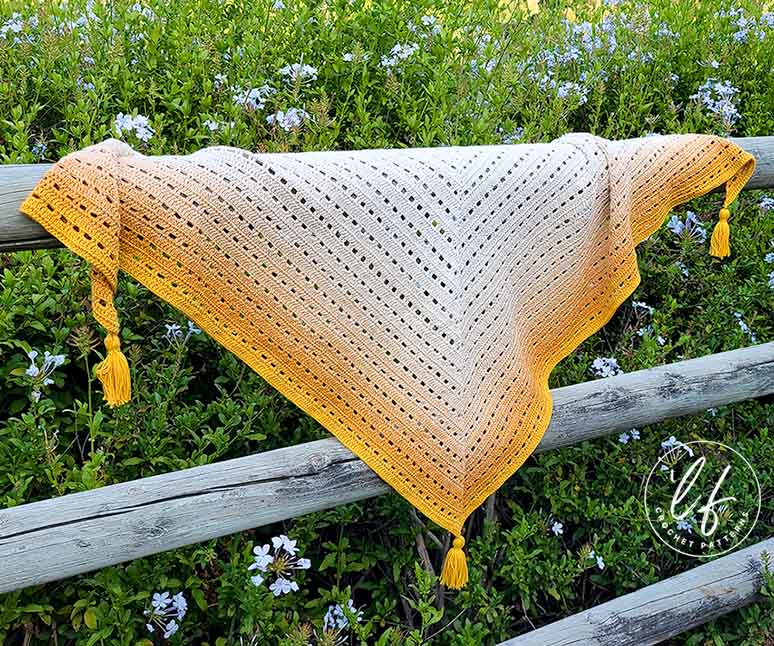
Identify Mistakes, Fix Them and Figure Out Why They Happened
It’s inevitable – we ALL make mistakes. You do, I do, my dog does. Mistakes happen and it’s important to remember not to beat yourself up about it. Instead, identify where the mistake is, fix it, and ultimately figure out how and why the mistake happened. Of course, this is a great crochet tip for beginners but it’s a good tip for life, too. 😉
When you notice something is off, identify why it’s off. If your stitch count is wrong, why is it wrong? If there’s a weird little line on each row when there shouldn’t be, why is there one? (Hint, you’re working only in one loop of the stitch when you should be working into two. (: ) If your work was supposed to be a square but now it’s a triangle…. why?
Mistakes are frustrating, I totally get it. I am not immune to mistake-frustration, myself. However, I urge you to flip a mistake from a negative to a positive and consider it a learning experience. If you take the time to figure out how and why the mistake happened, you’ve now learned what not to do – an opportunity you wouldn’t have had prior to making that very mistake.
Now, once you’ve learned from that mistake, will you make it again? Probably. We’re all human. You will, however, make the mistake less often. Plus, the next time you do make that same mistake, you’ll think: “Ah, I know why that happened, I can quickly go back and fix it” instead of swimming in frustration and drop kicking the project across the room.
Or worse: thinking I’ll never understand this, I might as well hide the yarn in the corner. Let’s avoid that thought all together. You can do this!
Count Your Stitches
There isn’t really a whole lot to say here because the title says everything. This is one thing that sounds (and can be) tedious but really should be done.
Count those stitches! Especially when you’re learning and if you’re still trying to master the basic stitches like single crochet. You know there should be 10 stitches in each row, so count them as you work. If you get across the row and you’ve only placed 9 stitches… well, you’ve either missed one earlier in the row and need to figure out where or the previous row missed one completely and you didn’t count your stitches, so now you only have 9 stitches to work into instead of 10.
I cannot stress this enough – count your stitches. As you become more comfortable with crochet and things feel more natural, you’ll likely start counting stitches every other row or every few rows. But when you’re first learning, it’s important to count your stitches all the time.
Crochet tip for first time beginners: This is how your first single crochet practice swatch will stay square instead of becoming a Dorito, like mine did. 🙂
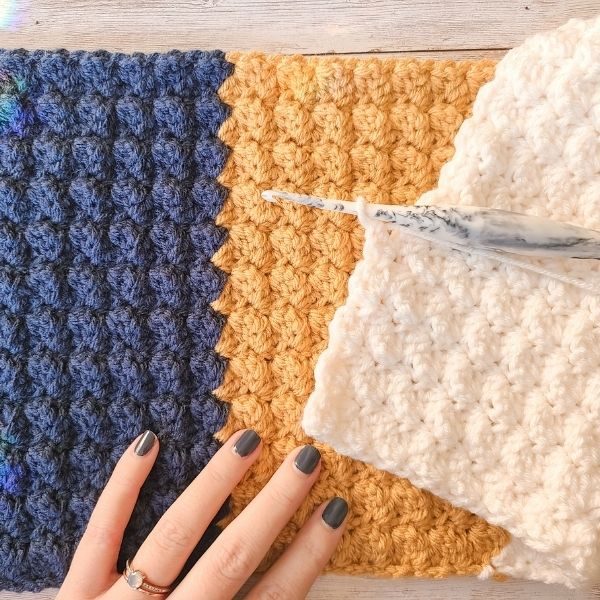
Focus on Tension & Practice It
This crochet tip for beginners can be a little ambiguous. If you’ve ever searched for tips about crochet tension, you’ve likely run into tons of different opinions about how to fix tension, how to hold the yarn and hook and possibly even some saying that you’re holding the yarn and hook wrong.
I’m here to tell you – you’re not holding anything wrong. While crochet has technical aspects about it that should be done correctly, what is most important is that you feel comfortable while doing it. I really don’t care if you’re holding your hook like a knife or a pencil or however you’ve been doing it – as long as you can loop yarn with the hook and it feels comfortable doing so, that’s what matters. The same goes for the yarn.
There are a lot of tips out there for how to “fix” tension issues. You might see people saying to hold the yarn differently, to get a yarn ring, to rain dance to the yarn gods. What all of this comes down to is finding a way to hold both the yarn and the hook in ways that feel comfortable that you can sustain for periods of time.
Beyond that, it’s really all about practice. Beginners typically will either pull really hard on the yarn thinking their project will fall apart if they don’t, or they’ll stay so loose that the work has no structure. This happens to everyone when they learn. I recently tried to crochet left handed (I’m a righty) and you know what happened? I pulled back so hard on the yarn that I couldn’t squeak the hook through the stitch no matter how hard I tried. That stitch was like Fort Knox and I was not getting into it. It took me back to learning how to crochet with my dominant right hand and I did the exact same thing then. You know what fixed my tight tension issues?
Practice. The best crochet tip you can ever receive as a beginner is to practice. If you’re crocheting so tight you can’t get the hook into a stitch, practice staying a little more loose. If you’re crocheting so loose that you can’t even find where the top of the stitch is, practice staying a little tighter.
When you first start crocheting, holding the yarn and the hook will straight up just feel wrong. It takes some time to get used to. Once you’re a little more used to it and get more comfortable, a correct tension for you will come.
Choose Small Projects that Push Your Current Abilities… And Don’t Give Up
Often when we learn a new skill or pick up a new hobby, we learn it because we saw some big thing that looked absolutely amazing and oh my gosh, I can make that!? I’m going to make that!
While one day we will be able to make the thing, we will have to build up our skills to the point where that thing is possible and not just a frustrating mess. Even Beethoven had to learn which keys were which on a piano and how the tones went together before he became one of the greatest pianists of all time.
So, as you work beyond your beginner swatches of basic stitches and start diving into crochet patterns, you’ll want to push yourself to try more patterns that will challenge you at least a little bit. Certainly you don’t have to pick huge, advanced patterns to work – that would be so difficult as a beginner! But search for patterns that have a decent amount of stitches or techniques you do know, but one or two you don’t. This will keep you in a skill level you feel good and confident in, and will help you feel comfortable trying something a little more advanced.
All patterns should have a difficulty level listed. These difficulty levels range from Beginner Friendly, Easy/Advanced Beginner, Intermediate and Advanced. Crochet designers usually get feedback from their testers and verify based off Craft Yarn Council recommendations. A great crochet tip for beginners who are looking to increase their skill level is to start working patterns of higher difficulty, following that range.
That’s not to say that you can’t work beginner friendly or easy patterns for the rest of your crocheting life. Of course you can! With crochet, do what makes you happy. However, attempting skill levels that feel beyond your current skill level will help you grow as a crocheter – whether you finish the item or not.
Which leads us to our next crochet tip for beginners…. Pattern Reading.
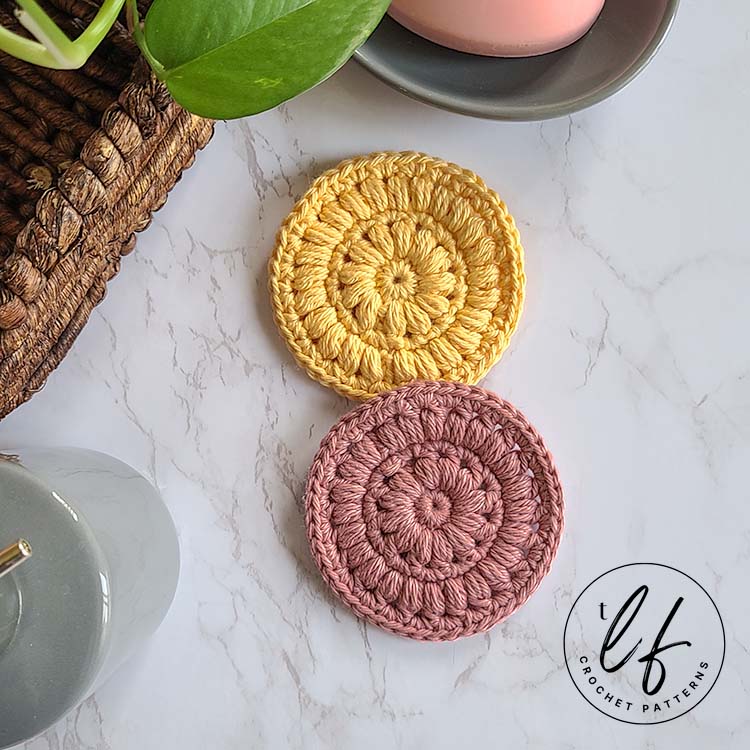
Push Yourself with Pattern Reading
Part of learning to crochet is the sometimes dreaded task of learning to read a pattern. When you’re new to crochet, reading a pattern can be like trying to read an alien language.
I’ll keep this portion of this crochet tips for beginners article short and sweet. Practice learning to read patterns. Try to memorize the abbreviations and what certain symbols mean. This will help a ton with learning to read a pattern, especially more advanced patterns.
One of the tips I’ve given out to a few beginners to crochet recently is to actually, physically write out the pattern “in English”. If you’re not used to reading patterns, it can be so difficult to do the math in your head, to remember the abbreviations, what does this symbol mean!?
Grab a note book or your computer and actually write out the steps in normal sentences – not short hand. For example, “[1 sc 7 sts, 2 sc next] Repeat 6x (54sts)”. As a beginner, that can seem like a lot! Try this: “I will work one single crochet into each of the next seven stitches. Then, in the stitch following, I will work two single crochet into one stitch. I will repeat this a total of six times. At the end, I should have 54 stitches.”
See how much easier that is to read? Put it in terms you know and easily understand. Actually write (or type!) it out! Just, you know, don’t try to sell the pattern, share it with anyone or pretend you wrote it yourself. This is simply a way to hone your pattern reading skills and make something that doesn’t seem like it should make sense… well, make sense!
Invest in Better Tools and Good Yarn
One thing that may seem a bit out of place when it comes to crochet tips for beginners is actually a really good one: Invest in your tools and yarn.
When you’re picking up a crochet hook and a skein of yarn for the first time, I wouldn’t recommend going all out to buy more expensive items. You’re just getting the hang of things. However, if you’ve moved beyond the basic stitches and crochet is something you can see yourself doing for some time, I recommend that you invest into better hooks and good yarn.
Most beginners head down to their local chain craft store (I’m looking at you, Michael’s!), grab a $2 aluminum hook in a size they saw mentioned somewhere once and a cheap skein of yarn (that is kind of scratchy but at least it’s not breaking the bank, right!?). Which is great and totally, absolutely fine to learn on. I would actually recommend someone who has never tried the craft before to go with these super cheap items. After all, you don’t want to spend a ton of money on something and then find out it isn’t for you.
Once you’ve been “hooked” on crochet, though, you’ll want to upgrade to better tools that will last longer, provide better stitching, help with pain in the hands and generally be more comfortable. You’ll also want to use better yarn quality of yarn – which helps with hand pain, too! Yes, this means it’s more expensive and yes, there are good uses for cheaper yarn and I use them all the time myself. But! If you’re looking to be “next level” and have your work look more professional, you’ll want a higher quality of yarn – even if it’s still big chain store brands.
I wrote about two of my hands down favorite tools I own that really changed the game for me, so I won’t go too much further into it here but I recommend checking out that article. I will say that my favorite hooks are the Furls Streamline Swirls. They’re a bit expensive but totally worth the cost (You can read all about why I absolutely love them in my Furls Streamline review!). However, I’ve used Clover Amour in the past which come in a set and were great, too. They are a bit more economical in terms of cost per set.
Other things that have changed the game for me in terms of tools are my yarn winder (which makes yarn cakes that are much easier to work from – this helps a lot with tension), my stitch markers, a good pair of scissors (that are SHARP! No one uses my scissors for anything but yarn), and organization for everything like these drawer baskets for my desk, this sewing box my best friend gifted me, and shelving to store all my yarn.
And, when you do get your hands on some better tools, don’t forget to clean them! Taking care of your tools is an often over looked tip that really is important.
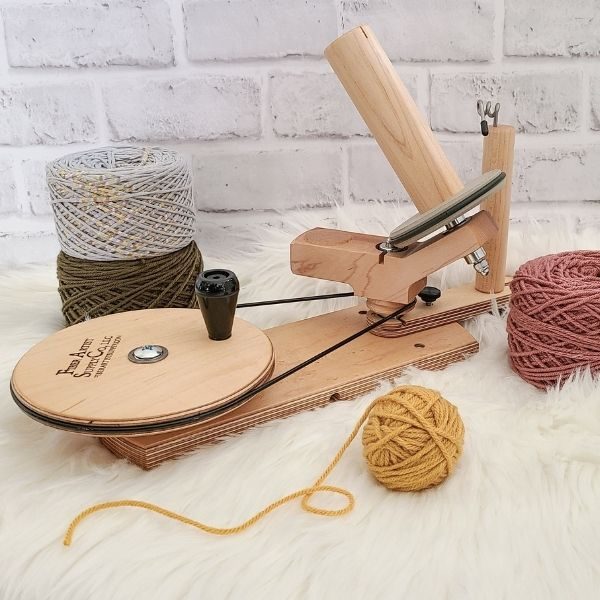
Choose Foundation Stitches When Possible
When you’re ready to really bring your skill level up a notch, the foundation stitches and magic circle are waiting for you! While they might seem intimidating to learn, these techniques can really bring up the “professional” factor of your makes and aren’t that difficult to learn provided you find a teacher that teaches in a style that you learn best from.
I cannot recommend enough in these crochet tips that beginners learn these techniques. Using foundation stitches (when possible, sometimes it’s not!) can not only make working borders around your work so much easier which will bring up that professional factor, but you won’t struggle with a long chain for big projects. Using the magic circle for items in the round create much tighter beginning circle, which is especially important if you’re planning to make amigurumi or other projects that require stuffing. I always, always, always use a magic circle for projects in the round that don’t require large openings made of chains.
If you’re beyond working the basic stitches like single crochet and double crochet and you’re moving on to working bigger projects with actual stitch patterns or projects in the round, I highly recommend learning these techniques.
Take Breaks and Stretch Often
Crochet is generally a pretty comfortable hobby that doesn’t require a lot of heavy lifting or exercising to get done. It has added health benefits, too!
However, we shouldn’t ignore the fact that the repetitive motion and usage of our fingers, wrists, arms and shoulders could have a negative impact on our physical health. It is important to stretch often to keep ourselves from pain and possible doctors visits. I wrote a huge article all about the different types of stretches I do, with sourced information so I’d recommend checking that article out.
Keeping yourself comfortable helps so much in terms of what your crochet projects end up looking like. Stretching is one of those underrated crochet tips for beginners that I don’t think is talked about enough. If you feel pain, that is going to show in your work. Make sure to take breaks, stretch often and stay pain free!
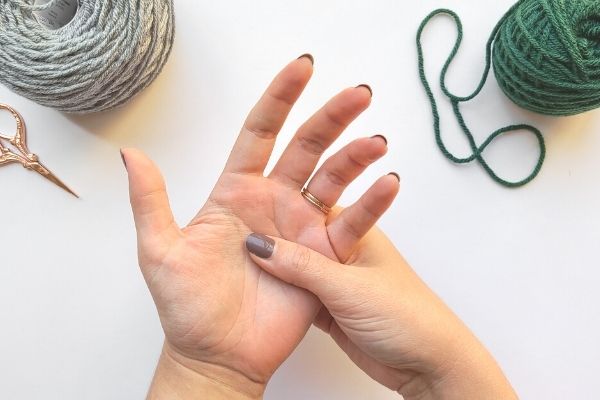
Practice Makes “Perfect”
I know we all hate hearing that saying “practice makes perfect” but it is important to say. Practice does make “perfect”. Specifically, I put perfect in quotes because I don’t believe anyone anywhere can be absolutely, 100% perfect in any way and it’s unrealistic to set ourselves up to be “perfect”. When we do that, we are setting ourselves up for failure.
However, practice is one of the most important crochet tips for beginners and that’s why you’ll see it listed on every article you could ever read that talks about these things. You can’t advance to higher levels of expertise if you don’t practice or if you’re unwilling to push yourself to try new, possibly intimidating things.
Practice will help you reach your level of perfect. So grab your favorite hook and a yarn you love and… practice! That’s all there is to it!
There they are! My 12 Crochet Tips for Beginners Who Are Ready to Advance to the Next Level
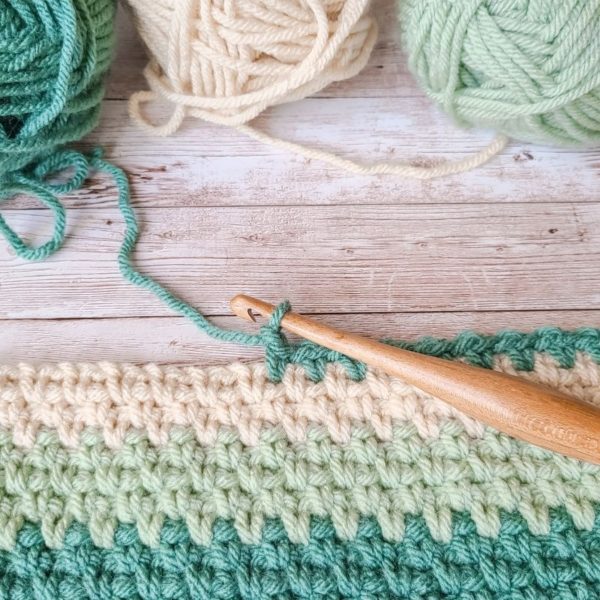
You’ve made it to the end! Congratulations – you deserve a pat on the back and for someone to buy you a really nice skein of yarn. 😉
I know when it’s all written out, these things can seem like huge undertakings. Please don’t get overwhelmed! You can choose one or two things to practice and work on, and then come back and choose another thing. One step at a time, Rome wasn’t built in a day… You know, all those sayings we hear all the time and roll our eyes at. They really are true.
Don’t forget – If you’d like to learn and create fun, supportive relationships with other wonderful crocheters, I’d love to invite you to my Facebook Group! I can be found hanging out in there most often and am more than happy to help you navigate through your learning experience. Plus, there are some wonderful crocheters in the group who I’m sure would love to support you and cheer you on through the process. See you there!
Thanks so much for hanging out with me today and reading through my 12 crochet tips for beginners who want to move up to the next experience level. See you next time!
Shannon | Designer & Editor
Shannon helps crocheters find their next project and build their skills with in depth tutorials and crochet patterns on her blog, theloopholefox.com.
With more than a decade of crochet experience, Shannon knows that understanding why we do something matters just as much as how we do it. She teaches new techniques and crochet stitches in depth so you can crochet with confidence.
Looking for more resources, tutorials, articles and crochet tips for beginners?
Check out my Stitch Tutorials
And other Resources and Articles, like yarn weights, my favorite tools, the best gifts and more.



Yes, yes, & yes again! Only one thing more, if you are bored doing double crochets, don’t be afraid to find a gorgeous complicated looking square or throw and read the pattern! You may be able to do most of the stitches and your friends on FB will help with the others, or a tutorial on YouTube may show you how.
Step by step growing into an advanced crochet adventure, woohoo!
This is such good advice! Doing the same stitches over and over again can get boring! It’s nice to have a little something else as a project on the side to work on to break up all those double crochets. 🙂